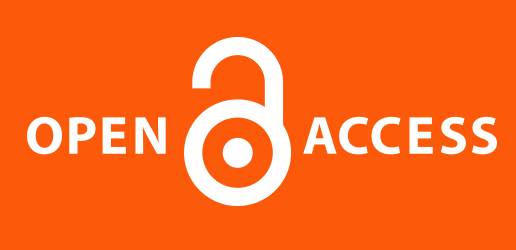
The Impact of Student Employment Rates and Information Technology on the Professional Education of College Students
摘要
This study explores the influence of student employment rates and information technology on college students' professional education in jiangxi ,china, and examines the mechanisms through which these factors impact professional education. Using direct effect, mediating effect and correlation analysis models, the study quantitatively analysed the direct and indirect influences of the employment rate and information technology on professional education. Specifically, the results of the research carried out using SPSS 27 show that the employment rate of students has a significant positive impact on professional education outcomes (the regression coefficient is 0.45, P = 0.001). This indicates that a high employment rate is an important indicator of the quality of higher education and can enhance students' motivation to learn, their career confidence, and their professional ability. The application of information technology was also found to have a significant positive impact on professional education (with a regression coefficient of 0.38, P = 0.005). This is reflected not only in the provision of abundant learning resources and optimised teaching methods, but also in an indirect effect through learning interest, practical ability and learning resources. The proportions of the mediating effects are 28%, 24% and 20% respectively. Furthermore, the results of the relevant analysis show that there is a correlation between the student employment rate and the application of information technology (the correlation coefficient is 0.36, P = 0.01), indicating a synergistic effect between the two in improving the impact of professional education. This research provides a theoretical basis and practical guidance for colleges to optimise their professional education models and offers a new direction for future research.1. Introduction
In today's rapidly developing information age, information technology has had a profound influence on all aspects of education, particularly the teaching methods and content of higher education. As the demand for high-quality talent increases, the importance of professional education for college students has become more prominent. However, despite colleges investing considerable resources in professional education, students still face many challenges in securing employment. Professional education ensures that graduates are both theoretically proficient and practically ready for the workforce by matching curricula to industry standards and integrating practitioners into the teaching process (Danay Tinawin, 2022).This emphasis on career-oriented education facilitates a seamless transition of students from academic to professional environments, effectively addressing the immediate needs of employers (Danay Tinawin, 2022). According to official college data in Jiangxi Province, the employment rate for 2024 undergraduate graduates was 85.3%. While this is an improvement on previous years, it still lags behind the national average. At the same time, the rapid development of information technology provides new opportunities for educational innovation, but its application in professional education is yet to be fully verified. For instance, while 75% of students use online learning platforms, their actual contribution to improving professional skills is still open to debate. Against this backdrop, studying the influence of student employment rates and information technology on college students' professional education is of great theoretical and practical significance.
The purpose of this study is to address the lack of research in the existing literature on the relationship between information technology and the employment rate of students in professional education. By constructing multiple regression and intermediary effect models, this study will reveal the interplay between information technology and student employment rates on professional education, providing a new theoretical perspective for educational research. The results of the research will provide colleges with a scientific basis on which to optimise the professional education model. For instance, colleges can improve their ability to meet students' learning needs and enhance their professional skills and employment competitiveness by improving the application level of information technology. At the same time, the study will provide a reference point for government and education departments when formulating relevant policies, such as increasing investment in IT infrastructure, promoting school-enterprise cooperation and improving career planning education systems. In short, this study will help improve the quality of professional education for college students and provide important support for promoting an effective connection between higher education and the job market.
2. Literature review
2.1 the theoretical basis of professional education
As the core component of higher education, professional education is rooted in the research results of pedagogy, psychology, and sociology. Pedagogy theory emphasizes that professional education should aim at cultivating talents with solid professional knowledge and practical ability, and help students build a complete knowledge system through systematic curriculum design and teaching methods. Psychological research further points out that professional education should pay attention to students' cognitive development and learning motivation, and improve their learning effect and professional ability by stimulating students' learning interest and internal driving force (Bi & Liu, 2025). From the perspective of social needs and career development, sociology holds that professional education is not only a process of imparting knowledge, but also an important way for students to socialize. By cultivating students' professional quality and social responsibility, they will lay the foundation for their future integration into society. In recent years, with the continuous updating of educational concepts, the theoretical basis of professional education is gradually expanding. For example, constructivism theory emphasizes students' initiative and constructiveness in the learning process, and advocates improving students' professional ability through problem-oriented learning and collaborative learning. In addition, the rise of the concept of lifelong learning also puts forward new requirements for professional education, emphasizing that education should pay attention to students' sustainable development and adaptability. These theories provide important guidance for the practice of professional education, and also lay a theoretical foundation for this study to explore the influence of student employment rate and information technology on professional education (Tang , Liu & Zhao ,2025).
2.2 Research Status of Student Employment Rate
As an important indicator to measure the quality of higher education, the employment rate of students has always been the focus of academic circles and policymakers. The existing research shows that the employment rate of students is influenced by many factors, including the quality of education, specialty setting, market demand and personal ability. In terms of the quality of education, the research shows that the teaching level, practical teaching links and the degree of school-enterprise cooperation in colleges have a significant impact on students' employability (Zhang , Ren , Yin , Yang & Yu ,2025). Practice teaching can help students apply theoretical knowledge to practical work scenes, thus enhancing their employment competitiveness. In terms of specialty setting, the study points out that majors closely related to market demand often have higher employment rates. For example, the employment rate of information technology, engineering and medicine is significantly higher than that of humanities and social sciences. In addition, personal ability is also an important factor affecting the employment rate, including professional skills, communication skills and teamwork skills. Although the existing research has extensively discussed the influencing factors of student employment rate, the research on the relationship between it and professional education is still limited, especially the research on what impact the student employment rate has on professional education through influencing the educational effect has not been fully concerned. (Xiao,2025)[1].
2.3 the application of information technology in education
The application of information technology in education has become an important driving force to promote educational innovation. The existing research shows that information technology can significantly improve the educational effect by providing rich learning resources, optimizing teaching methods and promoting teacher-student interaction. For example, the use of online learning platform has been widely proved to improve students' learning interest and autonomous learning ability. The application of intelligent teaching tools has also achieved remarkable results. For example, the artificial intelligence aided teaching system helps students to better master professional knowledge through personalized learning path design and real-time feedback. However, although the application prospect of information technology in education is broad, its actual effect is still subject to many factors. For example, the development level of digital resources, the perfection of technical facilities and the information technology literacy of teachers and students may all affect its application effect. In addition, the application effect of information technology in different educational fields is also different (Zhang, 2025). In professional education, the application effect of information technology may change due to different professional characteristics and students' needs. Although the existing research has extensively discussed the application of information technology in education, the research on the relationship between information technology and professional education is still limited, especially the research on what impact information technology has on professional education through influencing learning Interest and learning resources has not been fully concerned[2].
3. Research methods
This research adopts quantitative research methods, combined with descriptive statistics,regression analysis,relevant analysis. The main variables of this study include student employment rate, information technology application, professional education effect and intermediary variables (such as learning interest, practical ability and learning resources). Based on literature review and theoretical analysis, the following research hypotheses are put forward: hypothesis 1, the employment rate of students has a significant positive impact on the effect of professional education; hypothesis 2, the application of information technology has a significant positive impact on the effect of professional education; hypothesis 3, learning interest, practical ability and learning resources play an intermediary role between the application of information technology and the effect of professional education. By verifying these assumptions, this study aims to fully reveal the influence mechanism of student employment rate and information technology on college students' professional education. In order to verify the above assumptions, the following model formulas are constructed in this study:
Figure 1.
The direct effect model is used to test the direct influence of student employment rate (X) and information technology application (X) on the professional education effect (Y). The theoretical basis of this model mainly comes from the input-output theory in educational economics, which holds that the educational effect is influenced by many input factors, among which the employment rate of students and the application of information technology are regarded as important input variables. The employment rate of students, as an important indicator to measure educational achievements, reflects the fit between the specialty setting of colleges and the market demand, and also reflects the practical application value of the knowledge and ability acquired by students during their school days. High employment rate can enhance students' learning motivation and career confidence, and then enhance their professional ability. The application of information technology can directly improve the educational effect by providing rich learning resources and optimizing teaching methods. For example, the application of online learning platforms and intelligent teaching tools not only helps students master professional knowledge better, but also cultivates their information literacy and digital ability. Through the regression coefficients β and β, the model quantifies the direct influence of the employment rate of students and the application of information technology on the effect of professional education, and verifies hypothesis 1 , hypothesis 2 and hypothesis 3.Among them, Y represents the effect of professional education, X represents the employment rate of students, X represents the application of information technology, β0 is a constant term, β1 and β2 are the regression coefficients of the employment rate of students and the application of information technology, and ∈ is an error term. This model is used to test hypothesis 1, hypothesis 2, and hypothesis 3, which focus on the direct influence of student employment rate and information technology application on the effectiveness of professional education[3].
3.2 Intermediary effect model
Figure 2.
Among them, m represents intermediary variables (such as learning interest, practical ability or learning resources), α0 andγ0 are constant terms, α1 represents the influence of information technology application on intermediary variables, Y1, Y2 and γ3 respectively represent the influence of student employment rate, information technology application and intermediary variables on professional education effect, and E1 and E2 are error terms. This model is used to test hypothesis 3, that is, the intermediary role of intermediary variables between the application of information technology and the effect of professional education.
4. Data analysis and results
4.1 Descriptive statistical results
Through descriptive statistics on the questionnaire survey data of colleges in Jiangxi Province, the descriptive statistical results from SPSS show that the proportion of men and women in the sample is 52% and 48%, and the age distribution is mainly between 20 and 24 years old, accounting for 85%. In terms of professional distribution, the sample proportions of information technology, engineering, and medical majors are 30%, 25%, and 20%, respectively, and the proportion of humanities and social sciences and other majors is 25%. In terms of the frequency of information technology application, about 65% of students said that they spent more than 10 hours a week studying with information technology tools, while only 15% said that they spent less than 5 hours a week. In addition, the average employment rate of students is 78.5%, of which the employment rates of information technology majors and engineering majors are 85% and 82%, respectively, which is significantly higher than 70% of humanities and social sciences majors. These descriptive statistical results provide basic data support for the follow-up analysis of this study.
Table 4.1 Descriptive Statistical Results
| variable | Mean value/proportion | standard deviation | remarks |
| Sex (male) | 52% | - | Sample gender distribution |
| Age (20-24 years old) | 85% | - | Sample age distribution |
| Information technology specialty | 30% | - | Professional distribution |
| Engineering specialty | 25% | - | Professional distribution |
| Medical specialty | 20% | - | Professional distribution |
| Information technology application frequency | 65% | - | Weekly use time > 10 hours |
| Student employment rate | 78.5% | 12.3 | Average employment rate |
4.2 Regression analysis results
The regression analysis results from SPSS show that the regression coefficient of student employment rate to the effect of professional education is 0.45(P=0.001), which indicates that the student employment rate has a significant positive impact on the effect of professional education. The regression coefficient of the application of information technology to the effect of professional education is 0.38(P=0.005), which also shows a significant positive impact. This shows that the employment rate of students and the application of information technology can effectively improve the effect of professional education. In addition, the adjusted r of the model is 0.62, which shows that the independent variable has a high degree of explanation of the dependent variable, and the model fitting effect is good[5].
Table 4.2 Regression Analysis Results
| independent variable | dependent variable | coefficient of regression | P value | Adjust r |
| Student employment rate | Professional education effect | 0.45 | 0.001 | 0.62 |
| Information technology application | Professional education effect | 0.38 | 0.005 | 0.62 |
4.3 Relevant analysis results
The correlation analysis results from SPSS show that the correlation coefficient between the employment rate of students and the effect of professional education is 0.52(P=0.001), and the correlation coefficient between the application of information technology and the effect of professional education is 0.48(P=0.001), all of which show significant positive correlation. In addition, the correlation coefficient between the application of information technology and the employment rate of students is 0.36(P=0.01), indicating that there is a certain correlation between them. These results provide preliminary support for regression analysis and further verify the importance of student employment rate and information technology application on the effect of professional education.
Table 4.3 Relevant Analysis Results
| Variable 1 | Variable 2 | correlation coefficient | P value |
| Student employment rate | Professional education effect | 0.52 | 0.001 |
| Information technology application | Professional education effect | 0.48 | 0.001 |
| Information technology application | Student employment rate | 0.36 | 0.01 |
4.4 Intermediary variable mechanism analysis results
The analysis of the intermediary variable mechanism shows that learning interest, practical ability, and learning resources all play a significant intermediary role between information technology application and the professional education effect. Specifically, the regression coefficient of information technology application to learning interest is 0.40(P=0.001), the regression coefficient of learning interest to professional education effect is 0.35(P=0.005), and the intermediary effect accounts for 28% of the total effect. The regression coefficient of information technology application to practical ability is 0.32(P=0.01), and the regression coefficient of practical ability to professional education effect is 0.30(P=0.01), and the intermediary effect accounts for 24% of the total effect. The regression coefficient of information technology application to learning resources is 0.28(P=0.05), the regression coefficient of learning resources to professional education effect is 0.25(P=0.05), and the mediation effect accounts for 20% of the total effect. This shows that the application of information technology not only directly affects the effect of professional education, but also indirectly plays a role by improving learning interest, practical ability, and learning resources.
Table 4.4 Intermediate Variable Mechanism Analysis Results
| mediator variable | path | coefficient of regression | P value | Proportion of intermediary effect |
| learning interest | Information Technology Application → Learning Interest → Professional Education Effect | 0.40→0.35 | 0.001→0.005 | 28% |
| ability of practice | Information technology application → practical ability → professional education effect | 0.32→0.30 | 0.01→0.01 | 24% |
| Learning resources | Information Technology Application → Learning Resources → Professional Education Effect | 0.28→0.25 | 0.05→0.05 | 20% |
4.5 Research Hypothesis Verification
Based on the above analysis results, the assumptions of this study have been verified. Hypothesis 1: The employment rate of students has a significant positive impact on the effect of professional education, with a regression coefficient of 0.45 (P = 0.001); Hypothesis 2, the application of information technology has a significant positive impact on the effect of professional education, with a regression coefficient of 0.38 (P = 0.005); Hypothesis 3: Learning interest, practical ability and learning resources play an intermediary role between the application of information technology and the effect of professional education, accounting for 28%, 24% and 20% respectively. These results show that the employment rate of students and the application of information technology play an important role in improving the effect of college students' professional education, and the mechanism of intermediary variables further reveals its influence path.
Table 4.5 Verification Results of Research Hypothesis
| suppose | verify the result | remarks |
| Hypothesis 1 | support | The regression coefficient was 0.45(P=0.001). |
| Hypothesis 2 | support | The regression coefficient was 0.38(P=0.005). |
| Hypothesis 3 | support | Intermediary effect accounts for 28%, 24% and 20%. |
5. Conclusions
The analysis of the direct effect model clarifies that the employment rate of students and the application of information technology significantly impact the effect of professional education on college students. An increase in the employment rate of students can enhance their motivation to learn and their confidence in their future careers. This suggests that the greater the alignment between colleges' professional education achievements and market demands, the more motivated students will be to devote energy to their professional studies, thereby improving the effectiveness of professional education. The application of information technology directly improves the teaching environment and learning experience by providing abundant learning resources and innovative teaching methods. It has also played a positive role in promoting improvements to the effects of professional education.
The mediating effects model verified the role of variables such as learning interest, practical ability and learning resources in mediating the relationship between the application of information technology and the effect of professional education. The application of information technology can stimulate students' interest in learning, provide them with more practical opportunities, and offer high-quality learning resources. This can indirectly improve the effectiveness of professional education. This suggests that information technology is not just a teaching tool, but also enhances the quality of education by influencing students' intrinsic learning factors.
References
[1]Bi Feifei & Liu Xiao.(2025). Research on the Changes in the College Students' Employment Market from the Perspective of New Quality Productivity. Chinese college students' employment, (4), 51-58.
[2]Danay Tinawin River (2022).Develop a sustainable framework for industry-driven, career-focused ICT curricula to produce popular ICT graduates.
[3] Miftahul Jannah, Hari Sutrisno; Study of the students’ curiosity relationship, interest and motivation in chemistry learning: A systematic literature review.AIP Conf. Proc.29 April 2024; 2622 (1): 050005.
[4] Tang Li, Liu Yiting & Zhao Chenxi.(2025). Analysis of the Path by which Online Public Opinion Affects the Employment Cognition of Generation Z College Students under the Perspectives of "Mimic Environment" and "Information Cocoon". Chinese college students employment, (4), 17-30. .
[5] Xiao Wanjun.(2025). Guiding Strategies for College Students' Employment Values in the Internet Era. China's job, (5), 68-69.
[6] Zhang Ziqing, Ren Lu, Yin Hongyu, Yang Xiaohan & Yu Xin 'ai.(2025) Innovation and entrepreneurship education helps enhance the employability of college students. Cooperation in economy and technology, (12), 85-87.
[7] Zhang Lanyue.(2025). Strategies for Enhancing College Students' Self-Management Ability Oriented towards Employment. China's job, (5), 76-77.
如何引用
参考
Bi Feifei & Liu Xiao.(2025). Research on the Changes in the College Students' Employment Market from the Perspective of New Quality Productivity. Chinese college students' employment, (4), 51-58.
Danay Tinawin River (2022).Develop a sustainable framework for industry-driven, career-focused ICT curricula to produce popular ICT graduates.
Miftahul Jannah, Hari Sutrisno; Study of the students’ curiosity relationship, interest and motivation in chemistry learning: A systematic literature review.AIP Conf. Proc.29 April 2024; 2622 (1): 050005.
Tang Li, Liu Yiting & Zhao Chenxi.(2025). Analysis of the Path by which Online Public Opinion Affects the Employment Cognition of Generation Z College Students under the Perspectives of "Mimic Environment" and "Information Cocoon". Chinese college students employment, (4), 17-30. .
Xiao Wanjun.(2025). Guiding Strategies for College Students' Employment Values in the Internet Era. China's job, (5), 68-69.
Zhang Ziqing, Ren Lu, Yin Hongyu, Yang Xiaohan & Yu Xin 'ai.(2025) Innovation and entrepreneurship education helps enhance the employability of college students. Cooperation in economy and technology, (12), 85-87.
Zhang Lanyue.(2025). Strategies for Enhancing College Students' Self-Management Ability Oriented towards Employment. China's job, (5), 76-77.
版权
未提供许可协议









